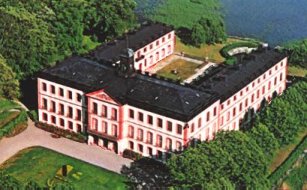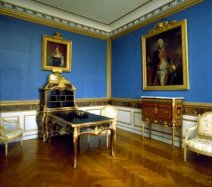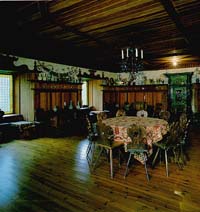
Many Swedish people associate Tullgarn Palace, near Trosa in Södermanland, with King Gustaf V and his Consort, Queen Victoria. During the 1920s, 30s and 40s, newspapers carried many feature articles describing Tullgarn as King Gustaf's summer residence. But its history goes back much further. The "Tyllegarn" estate is already mentioned in medieval documents, but the first Palace only built in the late 16th century, for Count Carl Sture. The old Renaissance Palace was pulled down in about 1720 and replaced with the present building, designed by the French fortification officer Joseph Gabriel Destain for the then owner, Count Magnus Julius De la Gardie.
In the 1770s the Palace was acquired by the State for Gustav III's youngest brother, Duke Fredrik Adolf of Östergötland. He embarked on a radical rebuilding of the Palace in the 1780s, when the wings were raised one storey higher and the whole building was given a new, modern flat Italian roof. Duke Fredrik Adolf's interiors at Tullgarn, e.g. the Red Antechamber and the Great and Lesser Bedchambers, are among the finest of their kind in Sweden.
 The study of duke Fredrik Adolph
The study of duke Fredrik Adolph
In 1881, Crown Prince Gustaf (V) married Princess Victoria of Baden, and Tullgarn became their summer residence. Many interiors were modernised at that time. The Great Breakfast Room, fitted out in virtually South-German Renaissance style, is a typical example.
 The Breakfast
Room
The Breakfast
Room
Today Tullgarn is open to the general public during the summer
and parts of it are used as holiday accommodation for employees
at the Royal Palaces. An "English Park" with meandering
footpaths and ponds surrounds the Palace. The Tullgarn area has
been designated an area of national scientific interest, and there
are permanent research stations here for biologists and zoologists
from Stockholm University.